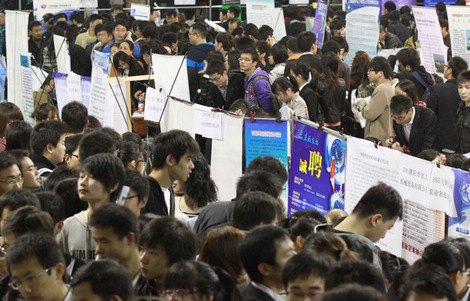|
|||||||||||
|
 The re-entry module of the spacecraft Shenzhou-8 lands in Siziwang Banner (county) in Inner Mongolia Autonomous Region Nov 17. [Photo/Xinhua] |
BEIJING - China's unmanned spacecraft Shenzhou-8 landed in north China Thursday evening, after completing the country's first-ever space docking mission.
The re-entry module of the spacecraft parachuted down at a landing site in Siziwang Banner (county) in Inner Mongolia Autonomous Region at around 7:30 p.m., marking the end of the 49-day space docking mission.
Launched from the Jiuquan Satellite Launch Center on November 1, the Shenzhou-8 first rendezvoused and docked with the space lab module Tiangong-1 two days later.
The two joint vessels orbited Earth for 12 days and conducted another docking after a brief disengagement on November 14.
The Tiangong-1, which blasted off from the Jiuquan launch center on September 29, will remain in orbit to await future docking attempts with the Shenzhou-9 and Shenzhou-10 spacecraft in 2012.
At least one of the two docking missions will take astronauts into space, according to Wu Ping, spokeswoman of China's manned space program.
A search and recovery team has been deployed for the return of the spacecraft, according to Zhang Haidong, commander-in-chief of landing operations for China's manned space program.
The craft should be retrieved within two and a half hours of landing. The search and recovery team will use helicopters equipped with receivers designed to detect signals from the craft, Zhang said.
After reaching the craft, the team will conduct a series of inspections and collect data from the vessel. Incubators inside the craft must be handled delicately and sent back to Beijing promptly, as they contain biological experiments jointly conducted by Chinese and German scientists, Zhang said.
Six of China's seven previously launched spacecraft landed in the grasslands of Siziwang banner. The region is well-suited for spacecraft landings, as it is sparsely populated, is relatively flat and has few trees or natural formations that could cause problems during landing procedures.
Shenzhou-8, launched on November 1, rendezvoused and docked with the target orbiter Tiangong-1 on November 3 in an orbit 343 km above Earth, marking China's first space docking a success. It disengaged from and re-docked with Tiangong-1 successfully On November 14.
The successful space docking tryouts provided vital know-how to China for its three-phase development strategy of the manned space program, Chinese technologists said.
China has announced its plan of another two docking missions with Tiangong-1 next year, with at least one manned. The country plans to establish its own space lab around 2016 and a manned space station around 2020.
Hot Topics
HIV/AIDS, Egypt protest, Thanksgiving, climate change, global economic recovery, home prices, high-speed railways, school bus safety, Libya situation, Weekly photos
Editor's Picks

|

|

|

|

|

|







